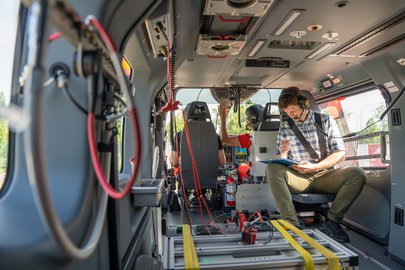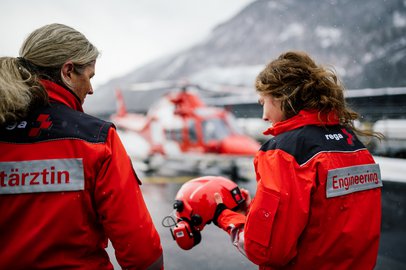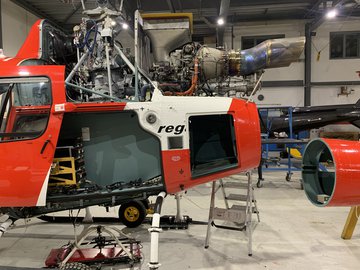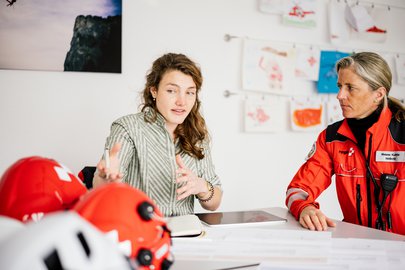Helmets not only serve as protection, but are also indispensable for communicating over the radio amidst the noise of the helicopter and the wind. Now, after 10–15 years in use, the helmets are reaching the end of their service life and need to be replaced. As with every procurement project, Rega is looking into what can be further improved.
Therefore, in their search for the ideal follow-on models, the engineers at the Design and Development Centre together with the crew members evaluated which technical modifications would enable the future helmets to fulfil the requirements even better than before and what could be further optimised: the hearing protection, for example, or the radio system. If a wireless solution is possible for the latter, this would give crew members even greater freedom of movement and enhanced wearing comfort when out on a mission. One particular challenge in this regard was the compatibility of the radio and communication systems that are built into the various crew helmets, which have to work together perfectly
Optimisations have been made as part of a project. The new helmets for emergency flight physicians are not only lighter but also correspond to the standard for helmets for mountaineers and provide protection against rockfall – which is important in Alpine terrain. Two visors improve visibility under poor contrast conditions or strong sunlight.
The headset, developed for Rega, has a microphone with wind protection and volume control on the left-hand earpiece. Improved noise insulation and the integration of a new microphone guarantee clear communication even in wind and with helicopter noise – in the helicopter, with patients and when talking to the Operations Center or other partners such as the police. The first helmets have been in use since March 2025.



